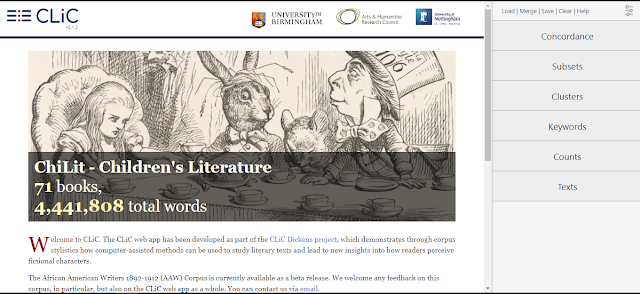This blog is written as response to the thinking activity given by Dr. Dilip Barad sir on the topic of Digital Humanities at the Department of English, MKBU.
Digital humanities
Digital humanities is a dynamic and interdisciplinary field that harnesses the potential of digital tools across various humanities disciplines. Despite its immense impact, some find the term "Digital Humanities" confusing, as the word "Digital" may not seem immediately compatible with "Humanities." To better understand this concept, let's explore an analogy with another term that shares a similar perplexity: "Computer ethics."
In my B.A. Program, I encountered the term "Computer ethics," which combines "computer" and "ethics." At first glance, one might question the connection between ethics and computers. However, "ethics" fundamentally relates to human behavior, distinguishing between "good" and "bad" actions. As computers became pervasive in society, questions arose about their ethical use, leading to the term "Computer ethics."
Similarly, the digital world profoundly influences our daily lives, with increasing reliance on digital tools and information sources. This reliance gradually extends its impact on the humanities, offering new avenues for exploration. The growth of digital technologies has significantly contributed to the development of humanities, culminating in the emergence of Digital Humanities.
In this context, Digital Humanities represents a collaborative and innovative approach, where scholars leverage digital technologies to delve into cultural, historical, and societal aspects. By integrating digital methodologies and computational tools, researchers can analyze vast datasets of texts, images, and other artifacts, gaining novel insights into the human experience.
The interconnectedness of the digital world with our lives has facilitated an enhanced exploration of humanities. Digital Humanities enables researchers to create interactive digital archives, analyze texts on a large scale, visualize complex information, and engage in collaborative research across diverse disciplines.
Now lets get common introduction of Digital Humaniteis from A I tool ChatGPT,
Introduction to Digital Humanities:
Digital Humanities (DH) is an innovative and interdisciplinary field that lies at the intersection of traditional humanities disciplines and cutting-edge digital technologies. It seeks to harness the power of computational tools, data analysis, and digital methodologies to explore, analyze, and interpret various aspects of human culture, history, literature, language, and society.
Unlike traditional humanities, which rely on manual research methods, Digital Humanities leverages the vast capabilities of computers to process and analyze large datasets that would be impractical or impossible to manage manually. By combining the expertise of humanities scholars with the computational prowess of technology, DH aims to unlock new insights and understandings of cultural artifacts, historical events, and the human experience.
The field of Digital Humanities encompasses a wide range of research areas and projects. Scholars and practitioners in DH use diverse computational techniques, such as data mining, text analysis, natural language processing, machine learning, spatial analysis, and data visualization. These methodologies empower researchers to reveal patterns, trends, and connections within vast collections of texts, images, audio, and other digital sources.
Digital Humanities projects can take many forms, from creating interactive digital archives and virtual museums to developing innovative tools for text analysis and linguistic studies. Collaborative efforts between researchers from different disciplines are common, fostering a rich exchange of ideas and methodologies.
The significance of Digital Humanities extends beyond academia, as it plays a vital role in preserving and making cultural heritage accessible to a broader audience. By digitizing and curating historical documents, artworks, and artifacts, DH projects contribute to the democratization of knowledge and promote public engagement with the past and the diverse cultural expressions of humanity.
As technology continues to advance, the field of Digital Humanities will undoubtedly evolve, leading to new research opportunities and innovative ways to explore and understand the multifaceted nature of human culture and history. Through its integration of humanistic inquiry and digital innovation, Digital Humanities stands as a transformative force, enriching our comprehension of the past and shaping the way we approach the future.
(OpenAI. "Introduction to Digital Humanities." OpenAI, 18 July 2023, https://www.openai.com.)
What is done under the Digital Humanities? Exploring Several projects of DH.
1 Digital archive
2 computational Humanities
3 Multimodal critique
Digital Archive:
Digital archives are an essential component of Digital Humanities. They involve the digitization and preservation of historical documents, artifacts, cultural objects, and other forms of human expression. By converting physical materials into digital formats, researchers and institutions can make these resources more accessible to a broader audience, including scholars, students, and the general public.
Computational Humanities:
Computational Humanities refers to the application of computational methods and techniques to various aspects of humanities research. It involves the use of computer-based tools and algorithms to process, analyze, and visualize large datasets, enabling researchers to uncover insights and patterns that would be challenging or time-consuming to achieve manually.
Multimodal Critique:
Multimodal critique in Digital Humanities involves the analysis and interpretation of digital artifacts, texts, or cultural expressions that combine different modes of communication, such as text, images, videos, audio, and interactive elements. This approach recognizes that meaning can be conveyed and interpreted through multiple channels, and understanding the interplay between these modes is crucial for a comprehensive analysis.
Some projects of DH

























.png)

